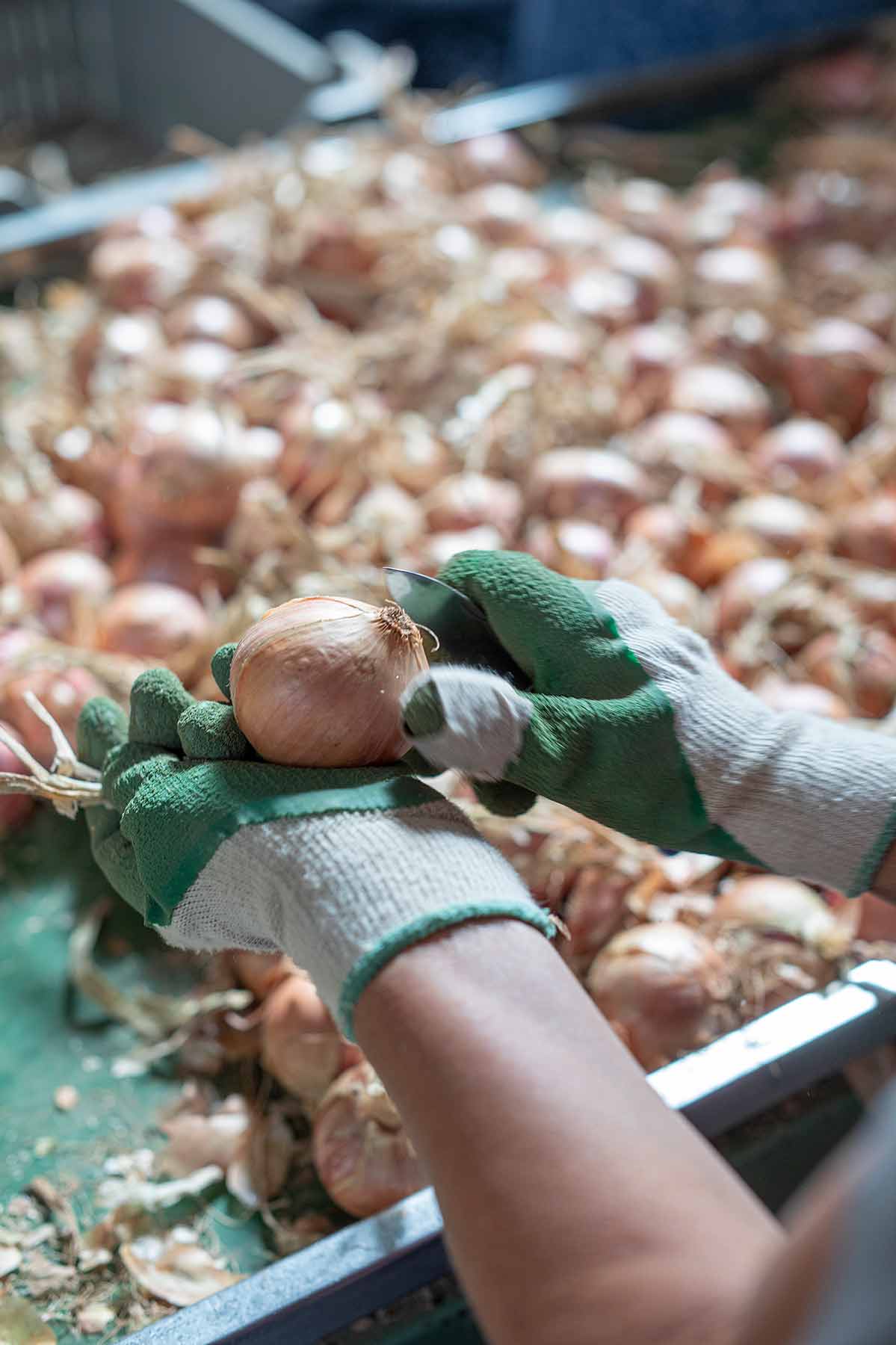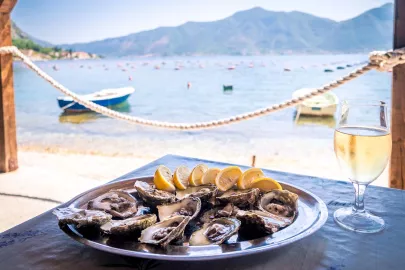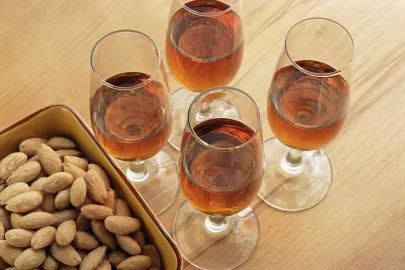In 2019, the Roscoff onion celebrated its 10-year anniversary after first receiving Controlled Destination of Origin status and its six-year anniversary for Protected Destination of Origin status. Read on for a quick history lesson as seen through the lens of a single, delicious vegetable that has been the pride and joy of people and an entire region for centuries. We got to spend time with the highly skilled artisans who grow this crop.

We are surrounded by fields everywhere we turn, with a glimpse of the sea on the horizon. Welcome to Roscoff, the home of the famous pink-brown onion. According to legend, a Capuchin monk on his way home from Portugal planted the first seeds in his monastery’s garden in 1647. The onion quickly became a popular crop in the area surrounding Roscoff Port, where sailors liked to purchase them for their ships. This special onion, which is particularly hardy and high in vitamin C, helped ward off scurvy during their trips at sea. Still, it wasn’t until the 19th century that the reputation of the Roscoff onion really started to take off. Henri Ollivier, a young farmer, decided to sell his onions on the other side of the English Channel in 1828. According to the story, “he came back with empty baskets and full pockets”. That was all it took for hundreds of farmers to follow suit. These “Johnnies”, as the English called them, left France every summer to sell their harvest in England. Around 15 farmers continue the tradition still today.

© ©Louis-Laurent Grandadam
A rich, wind-swept land
The pink Roscoff onion could not grow anywhere other than the coast of north Finistère. The requirements of the Protected Destination of Origin are met by only 24 communities in the region. These towns feature both a mild ocean climate and deep, fertile soil. The crop is planted in March and harvested in late summer. In between these times, the fields are cleared of weeds so the onions can have the space they need to grow correctly. “The plant needs air, wind, and light, so the fewer the trees there are, the better”, explains Vincent Guillerm, who met us on his farm. The minimal difference between night and day temperatures, the sea fog, and Brittany’s famous drizzle all help the onion grow. Then comes August, when a metal blade is used to cut the onion’s roots and remove it from the ground before it has reached full maturity. To preserve their flavour and ensure they can be stored naturally, the onions are pre-dried on the ground for ten days— if the weather cooperates, that is. With a single bout of rain, the onions’ delicate skin becomes stained with red and grey spots.

© ©Louis-Laurent Grandadam
Manual labour
Once they are harvested, the onions, which have no less than a 5 cm stem, are transported to storage buildings for sorting. Large bulbs are set aside to be sold one by one. Bulbs that are 5-7 cm in diameter are braided together. Everything is done by hand. The preparation process starts with cleaning the onions. The day we visited, this work was being done by five women and two men, all gathered around a large metal table. Armed with a small kitchen knife, they picked up each onion, cut off any remaining roots, and removed the outer layers with quick, confident motions. In just one hour, each worker scrubbed, cut, and trimmed 43 kilos of the coppery-coloured vegetable. Next comes the braiding stage, a Roscoff onion hallmark. Only three experts are entrusted with the task, which is critical for ensuring the bulbs can be stored naturally. The output at this part in the process is even faster at 40-60 braids per hour. You can barely see the workers hands dip into the crates for a large onion. Medium and small onions are braided into the raffia rope in alternating order. “I’ve won the world speed braiding championship several times. Last year, it was my brother who won!” says Vincent Guillerm. In the end, the braid should weigh one kilo. Without any anti-germination treatments, the onions should keep for close to a year. During that time, the onions will retain their fruity and juicy crunch. “It’s usually the onion enjoyed by people who don’t like onions”, says the farmer.

© ©Louis-Laurent Grandadam












